In January 2023, Defra announced a decision to implement Schedule 3 of the Flood and Water Management Act 2010 in England. This will introduce a new framework and national standards for the approval and adoption of SuDS in England, and will make Unitary and County Councils SuDS Approving Bodies. The UK Government is currently considering how Schedule 3 will be implemented.
Constructing SuDS

SuDS are no more difficult to construct than traditional piped drainage systems.
Construction of SuDS requires care and a contractor with a good understanding of their purpose and function. This is particularly important for the phasing of SuDS within the multiple stages of construction typical of larger development sites.
As highlighted by the Somerset SuDS review, erosion of SuDS components by surface water runoff where vegetation is not yet established, as well as blockage and damage by silt, are key considerations.
The management of surface water runoff and pollution during the construction phase is a requirement in Somerset, as set out in Somerset Local SuDS standard L19. This aim is to avoid construction having a detrimental impact on flood risk and water quality downstream.
Planning for construction
Before construction of SuDS can take place, full details are needed of the site conditions, the design details of each component. This must include how the construction of SuDS fits into wider construction works on the site.
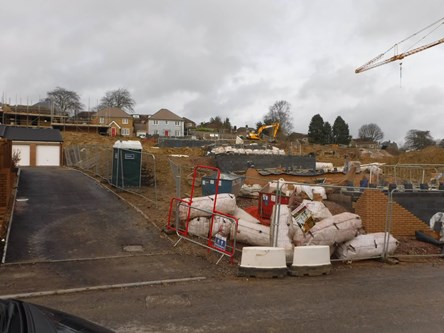 Development site under construction
Development site under constructionA Construction Method Statement must be prepared and approved by the LLFA at the detailed design stage, before SuDS construction works can commence. The method statement should identify the potential constraints and requirements for constructing SuDS on the site.
The Construction Method Statement should contain the following:
- Who will be responsible for construction.
- How and when SuDS will be built, in relation to the overall site construction programme including phasing of development.
- Evidence that works will be completed early in the process, and a proposed strategy for sediment control and site drainage during construction.
- If not possible, evidence must be provided that sufficient remediation of SuDS features will take place after construction.
- Consideration of ecological and water quality impacts.
- Emphasis of the differences between traditional construction activities.
- Constraints on site works and how other works will be co-ordinated with SuDS.
- A clear process of as-built SuDS inspections and sign off.
See the pre-construction checklist within Section 6.2 of the CIRIA C768 Guidance on the construction of SuDS for full details of what needs to be considered before constructing SuDS.
During construction
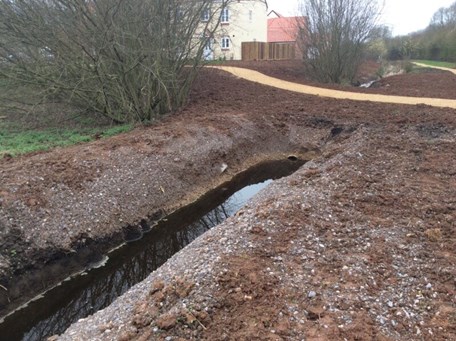 Newly installed swale in a development site
Newly installed swale in a development siteDuring the construction of SuDS, several site management practices should be put in place, to prevent costly damage and re-building of SuDS features.
The phasing of construction works and management of site activities are critical to the performance and success of SuDS features. As best practice, SuDS should be completed early and isolated from areas of ongoing construction, while the rest of the site works are underway.
The construction of SuDS involves relatively simple groundworks, such as cut and fill and the re-grading of site slopes and levels. However, the precision needed to build effective SuDS should not be underestimated.
Site Management
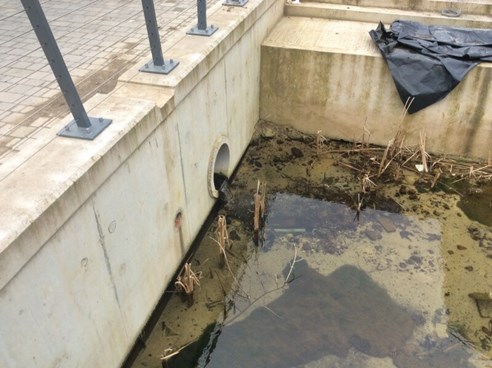 Sediment flowing out of a culvert in a new development
Sediment flowing out of a culvert in a new developmentThe following aspects should be considered when managing the construction of SuDS on a development site:
- Appropriately phasing SuDS into development
- Allows surface water generated during construction phase to be managed on site.
- Prevents damage to below-ground structures.
- Isolates the SuDS features from areas of 'live' construction on the site, to avoid damage.
- Keeps site access and material storage areas, which may cause damage, away from SuDS features.
- Managing runoff both on and off-site
- On steeper slopes, check dams should be used to manage the velocity of runoff on the site, to prevent erosion.
- Temporary features, like basins and swales, can be created to accommodate the runoff generated on the site during the construction phases.
- Pollution control
- Construction must meet regulatory requirement of discharged water from the site being free from silt and pollutants.
- If SuDS are used to drain site runoff during construction, they must later be remediated, to remove silt and pollutants.
- Managing soils and controlling sediment erosion
- Compaction of soils designated for SuDS by heavy machinery should be avoided.
- To control erosion, grassy SuDS either need to have vegetation established, or to be covered by erosion control mats and blankets, before they are used.
- Reducing erosion prevents silt from entering other parts of the system.
Inspection
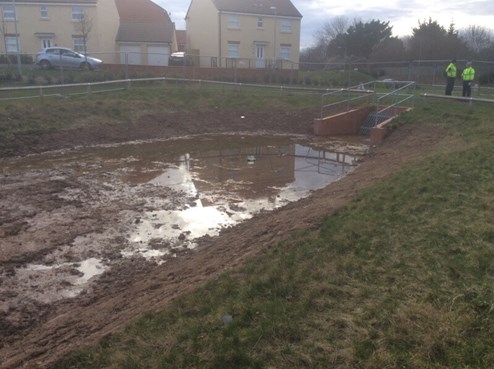 Erosion on banks of newly installed detention basin
Erosion on banks of newly installed detention basin- SuDS should be inspected at agreed points during construction, to confirm that the built features meet the approved design.
- Where significant variations are discovered on site (e.g. changes in levels, changes in materials, changes in the sequence of works) they should be reviewed by the original SuDS designer, to determine how this will affect the design performance.
See Susdrain Construction Guidance for further information - https://www.susdrain.org/delivering-suds/using-suds/delivery/construction.html
After construction
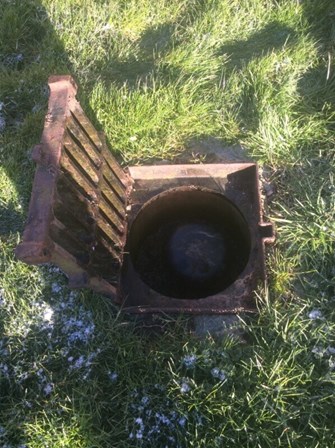 Inspection chamber flow control structure in a SuDS feature
Inspection chamber flow control structure in a SuDS feature
Handover inspection and sign-off
- After construction, the adopting body (whether Wessex Water, Somerset Council Highways or a private company) should arrange inspections of the work, prior to adoption.
- An as-built topographic survey of the system should be completed after construction.
Reviewing the performance of SuDS
- Like all drainage systems SuDS components should be regularly inspected, monitored and maintained in line with agreed method statements to ensure efficient operation and prevent failure.
- The quality and performance of completed SuDS may be reviewed at any time by the Somerset SuDS Inspector.
Further details on the SuDS inspection role can be found here.
CIRIA Guidance on the Construction of SuDS
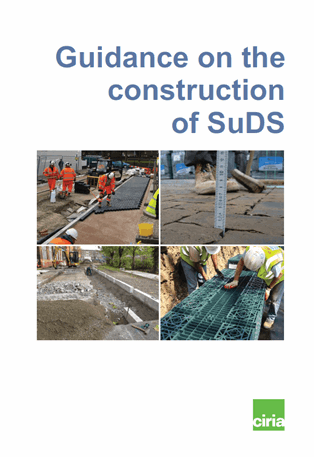 CIRIA Guidance on the Construction of SuDS
CIRIA Guidance on the Construction of SuDS
The CIRIA Guidance on the Construction of SuDS was prepared in 2017 to assist those building, inspecting and approving SuDS. It aims to make sure that SuDS are built as designed.
The guide is detailed yet easy to follow, with the following key features:
- Good explanations of the jargon associated with SuDS.
- Series of good practice checklists to help before, during and after construction.
- Case studies of constructed SuDS, where things have gone well and where lessons can be learnt.
- A series of pointers and hints are provided, to identify potential problems ateach stage in the construction process.
The Guidance on the Construction of SuDS should be consulted in the design and construction of all SuDS in Somerset.

